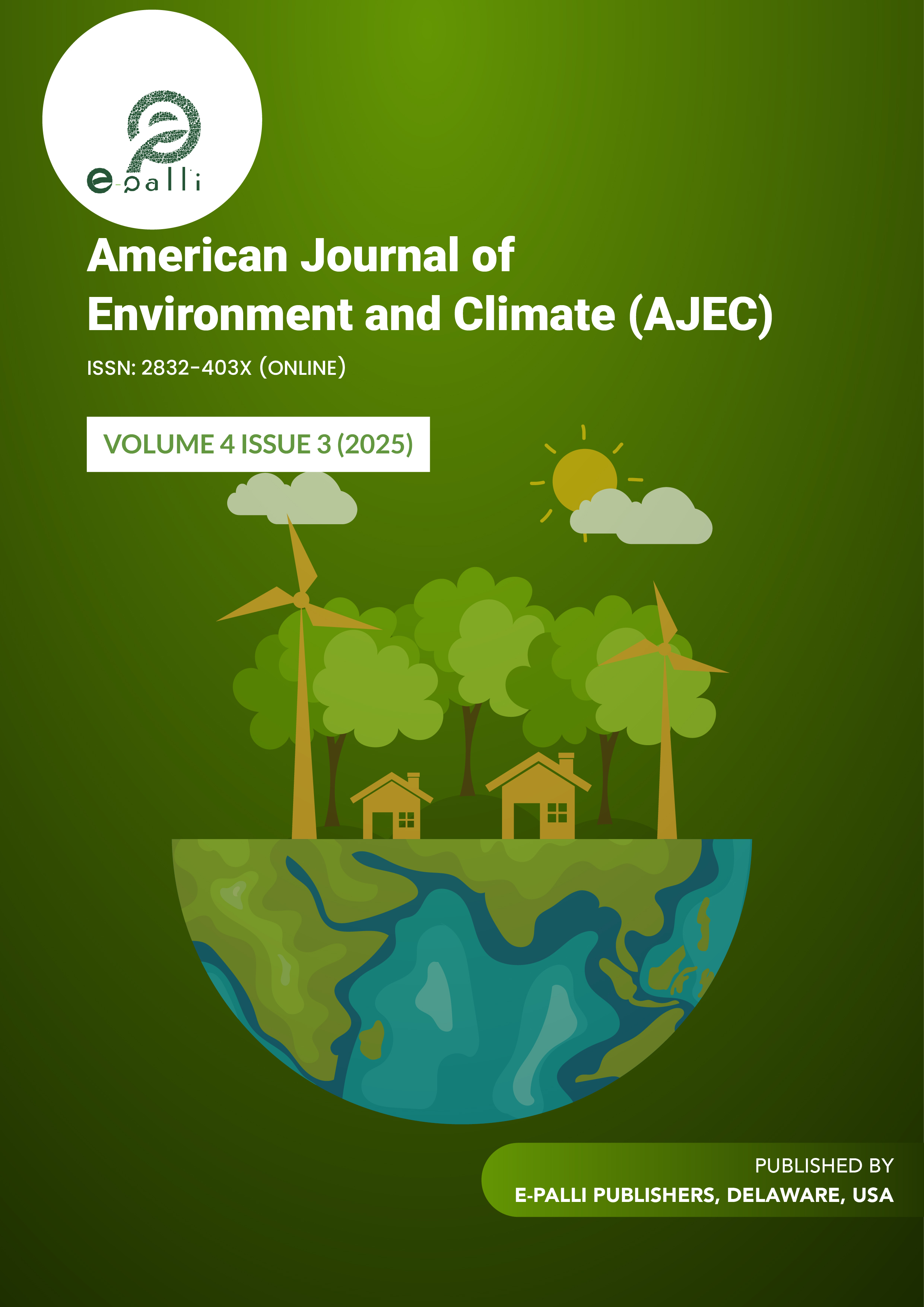Redefining Farm Risk: A Biosecurity and Proximity-Based Evaluation Matrix
DOI:
https://doi.org/10.54536/ajec.v4i3.5735Keywords:
Agricultural Trade, Biosecurity, Farm Evaluation Matrix, Livestock Farming, Regulatory ComplianceAbstract
Biosecurity, in current farm evaluation procedures, is typically assessed through general inspection checklists that often presume compliance with the stipulated minimum distance requirements. However, such assumptions may overlook the nuanced role of biosecurity in mitigating disease risks. Additionally, farm assessments conducted for import certification or domestic recognition frequently lack standardized criteria, resulting in inconsistent and potentially inequitable evaluations. This article introduces a structured, risk-based farm evaluation matrix comprising eight criteria, categorized into severity and probability dimensions. Each criterion is rated at three levels, low, medium, and high, with corresponding numerical weights (5, 10, and 15) to enable consistent scoring. The Risk-Based Farm Score (RBFS) is calculated by multiplying the average scores of severity-related and probability-related criteria. To evaluate the matrix’s applicability, all attributes were held constant except for regulatory compliance and proximity to neighboring farms, each tested at three levels. Results demonstrate a clear inverse relationship between regulatory compliance and (RBFS), with higher regulatory compliance associated with lower risk scores. In contrast, proximity to other farms correlates with higher (RBFS), though its influence is less significant than that of regulatory compliance. Standard deviation analysis reveals greater variability in (RBFS) across compliance levels, underscoring the critical role of regulatory adherence in determining farm risk. Adoption of the developed farm evaluation matrix globally could enhance transparency, reduce trade barriers, and promote safer agricultural trade.
Downloads
References
Alarcón, L. V., Allepuz, A., & Mateu, E. (2021). Biosecurity in pig farms: a review. Porcine Health Management, 7(1). https://doi.org/10.1186/s40813-020-00181-z
Benavides, B., Casal, J., Diéguez, J. F., Yus, E., Moya, S. J., Armengol, R., & Allepuz, A. (2020). Development of a quantitative risk assessment of bovine viral diarrhea virus and bovine herpesvirus-1 introduction in dairy cattle herds to improve biosecurity. Journal of Dairy Science, 103(7), 6454–6472. https://doi.org/10.3168/jds.2019-17827
Duarte, F., Tamminen, L.-M., Kjosevski, M., Ciaravino, G., Delpont, M., Correia-Gomes, C., van den Borne, B.H. P., Chantziaras, I., ... & Allepuz, A. (2025). Methods to assess on-farm biosecurity in Europe and beyond. Preventive Veterinary Medicine, 239, 106486. https://doi.org/10.1016/j.prevetmed.2025.106486
Fadel, M. A., Hussein, A. S., and Maamari, M. A. (2012). Mapping poultry farms in the UAE utilizing GIS technology [Review of Mapping poultry farms in the UAE utilizing GIS technology]. Journal of Food, Agriculture & Environment , 10(13 &14), 567–571.
Gelaude, P., Schlepers, M., Verlinden, M., Laanen, M., & Dewulf, J. (2014). Biocheck.UGent: A quantitative tool to measure biosecurity at broiler farms and the relationship with technical performances and antimicrobial use. Poultry Science, 93(11), 2740–2751. https://doi.org/10.3382/ps.2014-04002
Huber, N., Andraud, M., Sassu, E. L., Prigge, C., Zoche-Golob, V., Käsbohrer, A., D’Angelantonio, D., Viltrop, A., Żmudzki, J., Jones, H., Smith, R. P., Tobias, T., & Burow, E. (2022). What is a biosecurity measure? A definition proposal for animal production and linked processing operations. One Health, 15(0), 100433. https://doi.org/10.1016/j.onehlt.2022.100433
Martínez-Guijosa, J., Lima-Barbero, J. F., Acevedo, P., Cano-Terriza, D., Jiménez-Ruiz, S., Barasona, J. Á., Boadella, M., García-Bocanegra, I., Gortázar, C., & Vicente, J. (2021). Description and implementation of an On-farm Wildlife Risk Mitigation Protocol at the wildlife-livestock interface: Tuberculosis in Mediterranean environments. Preventive Veterinary Medicine, 191, 105346. https://doi.org/10.1016/j.prevetmed.2021.105346
Maye, D., & Chan, K. W. (Ray). (2020). On-farm biosecurity in livestock production: farmer behaviour, cultural identities and practices of care. Emerging Topics in Life Sciences, 4(5). https://doi.org/10.1042/etls20200063
Scanes, C. G. (2018). Impact of Agricultural Animals on the Environment. Animals and Human Society, 427–449. https://doi.org/10.1016/b978-0-12-805247-1.00025-3
Sasaki, Y., Furutani, A., Furuichi, T., Hayakawa, Y., Ishizeki, S., Kano, R., Koike, F., Miyashita, M., Mizukami, Y., Watanabe, Y., & Otake, S. (2020). Development of a biosecurity assessment tool and the assessment of biosecurity levels by this tool on Japanese commercial swine farms. Preventive Veterinary Medicine, 175, 104848. https://doi.org/10.1016/j.prevetmed.2019.104848
Tilli, G., Laconi, A., Galuppo, F., Mughini-Gras, L., & Piccirillo, A. (2022). Assessing Biosecurity Compliance
in Poultry Farms: A Survey in a Densely Populated Poultry Area in North East Italy. Animals, 12(11), 1409. https://doi.org/10.3390/ani12111409
WOAH. (2023). Terrestrial Code Online Access. WOAH - World Organisation for Animal Health. https://www.woah.org/en/what-we-do/standards/codes-and-manuals/terrestrial-code-online-access/
Zanon, T., Alrhmoun, M. & Gauly, M. (2024). Assessing the impact of biosecurity practices and animal welfare in small-scale mountain dairy farming. Scientific Reports, 14(1). https://doi.org/10.1038/s41598-024-63841-y
Downloads
Published
How to Cite
Issue
Section
License
Copyright (c) 2025 Hamid Ragab Orban

This work is licensed under a Creative Commons Attribution 4.0 International License.








